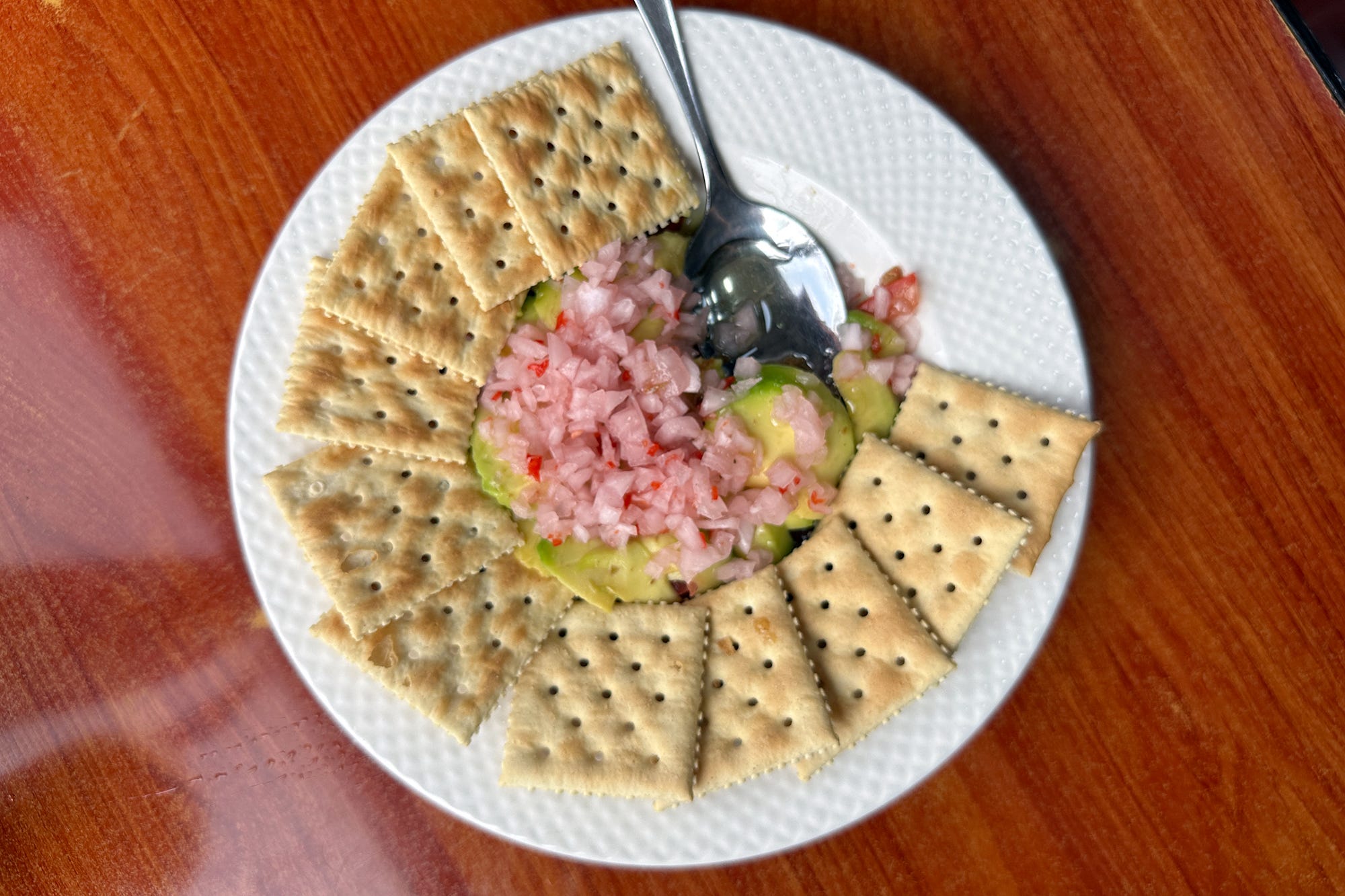“Let me show you what to do,” says Andrés Ángeles, who owns El Colorao de Chucuito in Callao, the port of Lima. He loads the knife with the muchame I ordered on the table with my fork and makes sure to lift from the bottom up, so you get every layer – the cured tuna, slices of avocado, tomato and salsa chalaca. Then he places it on a soda cracker and drizzles olive oil from a carafe on the side over it and shoves it directly into my mouth before I can say anything. I laugh and I laugh more as I write this, but it captures the neighborhood perfectly. Callao is quirky. There is no other place even remotely like it in Lima.
When preparing for landing at Jorge Chavez International Airport in Callao, the flight path makes a turn from land and angles out over the Pacific Ocean. If you look down you might see the occasional oil tanker or trawler, but mostly there will be a collage of small, brightly painted wooden fishing boats dotting the turquoise water. Depending on which side of the plane you are sitting, you might also catch a glimpse of the Castillo de Real Felipe, an 18th century fortress built to defend against pirate attacks. Or the Islas Palominos, the tiny spits of barren land inhabited by colonies of sea lions, not to mention the occasional Nazca booby or Humboldt penguin.
Upon landing, most travelers depart for posher areas like San Isidro, Miraflores and Barranco well to the south and never spend any time here at all. Neither do the Limeños that live in those neighborhoods. It feels isolated from the rest of the city, especially La Punta, a narrow peninsula of land that juts out near the port, just a few blocks wide and a few kilometers long, with grand centuries old buildings and water all around. Much of the rest of Lima sits on a cliff, but in Callao the ocean is ever-present.

Muchame is a form of curing seafood that was once common among fishermen around Lima but the recipe has mostly faded into memory. Except here. It’s on most of the menus in La Punta. It’s a legacy of Italian immigrants that once settled here, though there isn’t quite a recipe like in Italy. It used to be made with dolphin meat, though when that practice became frowned upon, fishermen started making it from pelagic fish with dark meat, like tuna and bonito. The filets get cured in a salt and sugar brine for at least a day, then left to rest in the su and cured in olive oil, garlic, oregano and salt until it is used, which could be more than a week later.
Keep reading with a 7-day free trial
Subscribe to New Worlder to keep reading this post and get 7 days of free access to the full post archives.




